Does Adding Epsom Salts To Your Bath Ease Muscle Pain?

Adding Epsom salts can make your bath more effective. This is an old home remedy for easing muscle pain which is still widely used today. It is not just an old wives’ tale – there are good reasons for thinking it will help your muscles and your headaches.
Epsom salts act as a source of magnesium ions. These play an essential role in body chemistry, including the maintenance of normal functioning of nerves and muscles.
"Epsom salts act as a source of magnesium ions… including the maintenance of normal functioning of nerves and muscles."
Many headache sufferers have lower than normal levels of magnesium ions in their blood and brain [5,6,7,8] and intravenous magnesium will often quickly relieve a headache attack.[8,9]
Magnesium ions can also enter the bloodstream by absorption across the skin [10,11]. A small study showed that soaking in an Epsom salt bath for 12 minutes two times a week should be sufficient to restore normal levels.[11] The effects on headaches have not been studied but it seems well worth trying.
"Many headache sufferers have lower than normal levels of magnesium."
You will need about 2 cups of Epsom salts in a standard sized bath tub.
If you suffer from migraines, you may have noticed that your hands and feet tend that tend to get colder before and during an attack.
For many people this is a reliable early warning sign.
A warm bath taken at this stage will help prevent the attack from progressing further by drawing blood away from your head towards your extremities.
This is an excerpt from the ebook Stop Headaches Naturally - Chapter 11.15 - Heat, Cold and other Therapies
References:
[5] P Sarchielli, G Coata, C Firenze, P Morucci, G Abbritti and V Gallai (1992). “Serum and salivary magnesium levels in migraine and tension-type headache. Results in a group of adult patients.” Cephalalgia 12(1): 21-27.
[6] BM Altura and BT Altura (1996). “Role of magnesium in patho-physiological processes and the clinical utility of magnesium ion selective electrodes.” Scand J Clin Lab Invest Suppl 224: 211-234.
[7] A Mauskop, BT Altura, RQ Cracco and BM Altura (1993). “Deficiency in serum ionized magnesium but not total magnesium in patients with migraines. Possible role of ICa2+/IMg2+ ratio.” Headache 33(3): 135-138.
[8] A Mauskop and BM Altura (1998). “Role of magnesium in the pathogenesis and treatment of migraines.” Clin Neurosci 5(1): 24-27.
[9] A Mauskop, BT Altura, RQ Cracco and BM Altura (1996). “Intravenous magnesium sulfate rapidly alleviates headaches of various types.” Headache 36(3): 154-160.
[10] H Laudańska, A Lemancewicz, M Kretowska, T Reduta and T Laudański (2002). “Permeability of human skin to selected anions and cations--in vitro studies.” Commun Mol Pathol Pharmacol 112(1-4): 16-26.
[11] Dr RH Waring (2009). “Report on Absorption of magnesium sulfate (Epsom salts) across the skin.”
Can A Happy Spouse Be Good For Your Health?

Happy hubby, happy wifey…
A recent study published in the Health Psychology Journal suggests that having a happy spouse is good for your health. Nearly 2,000 couples aged between 50 and 94 were asked about their happiness, health and exercise levels over the course of six years and these are some of the findings:
- Happy spouses are more likely to provide strong social support, such as caretaking
- Happy spouses encourage their partners to adapt healthy habits - regular exercise, eating well and adequate sleep
- Having a happy partner may enhance health and make life easier
So as the saying goes, “Happy wife, happy life” but now we can add, “Happy hubby, happy wifey.”
Be Your Own Doctor

Even though there is so much information that can be found on the internet or health related Apps for your smart phone, one should NEVER self-diagnose or self medicate… leave that role for a well educated and qualified doctor.
But I do believe that the best medicine is prevention. For that to occur you need to take more of an active role in prescribing some of the most beneficial and effective medicine for yourself and become your own ‘doctor.’
"The best medicine is prevention"
Here is some ‘medicine’ that you can begin to take:
- Healthy & Varied Diet
- Exercise - cardio, strength & stretch
- Sleep
- Diaphragmatic breathing
- Laughter
- Keep hydrated
- Sunshine
- Positive attitude
- Pilates
- Manual Therapy
The Perfect Plank
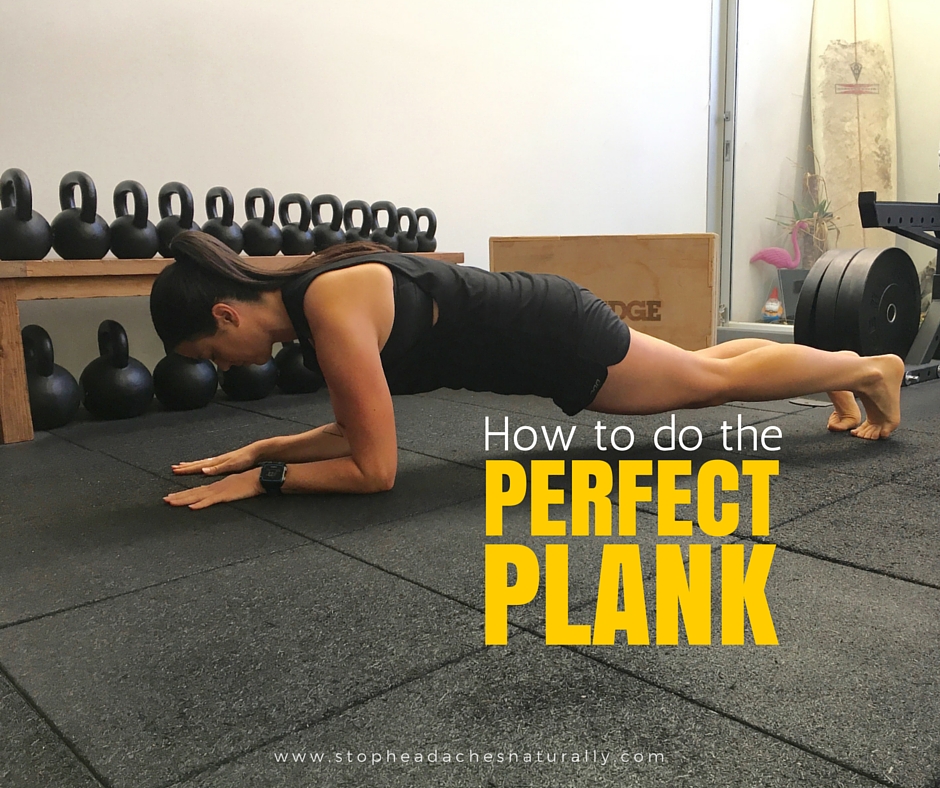
When performing the plank it is important to use the correct technique. This will allow you to get the most out of the exercise and reduce the risk of injury.
That is why I contacted Amber Johnson - Founder, Owner and Strength & Conditioning Coach at First Wave Fitness and asked her, "How do you perform the perfect plank?" Here is Ambers' response…
The plank is a brilliant exercise to learn to create and maintain tension throughout the core in a neutral spine position.
Here is how to set up your plank:
1. Setting up on your elbows, feet together, knees locked out straight and your weight evenly distributed throughout your body
2. Align elbows directly underneath your shoulders with forearms parallel, hands relaxed, palms facing down
3. From here, we want to pack our shoulders down into our ribcage and away from your ears. Without moving your forearms, imagine pulling them backwards along the floor to lock your upper body and pelvis together as one unit
4. To align your spine in a neutral position, find the best position where you can squeeze your glutes
5. Your head and neck should also be kept in a neutral position (you may wish to place a broomstick down your back to ensure correct alignment is maintained. With the stick making contact at the back of your head, upper back and glutes).
Engage your core by gently drawing the belly button in and exhaling slowly to hold a strong tension through the middle of your body. From here, take slow, small breathes in and gently exhale to maintain this tension.
When attempting the plank, you should always aim for quality over quantity. When you first set out, run through your mental checklist of form cues and aim for short intervals.
"Always aim for quality over quantity"
Initially you may wish to start with 10 seconds holds and 10 seconds rest to reset and come up again. Try to work towards 6x 10 seconds holds and gradually build the working interval as you feel more confident with your form.
Once you have conquered the 6x 10 seconds hold, a good goal is to build towards a 30 seconds quality hold. As you advance, aim for quality holds between 30-60 seconds, and eventually 60 seconds-2 minute holds.
For those who are looking to advance the plank from here and challenge their Cross Core Sling Systems try the following:
Single Arm Holds
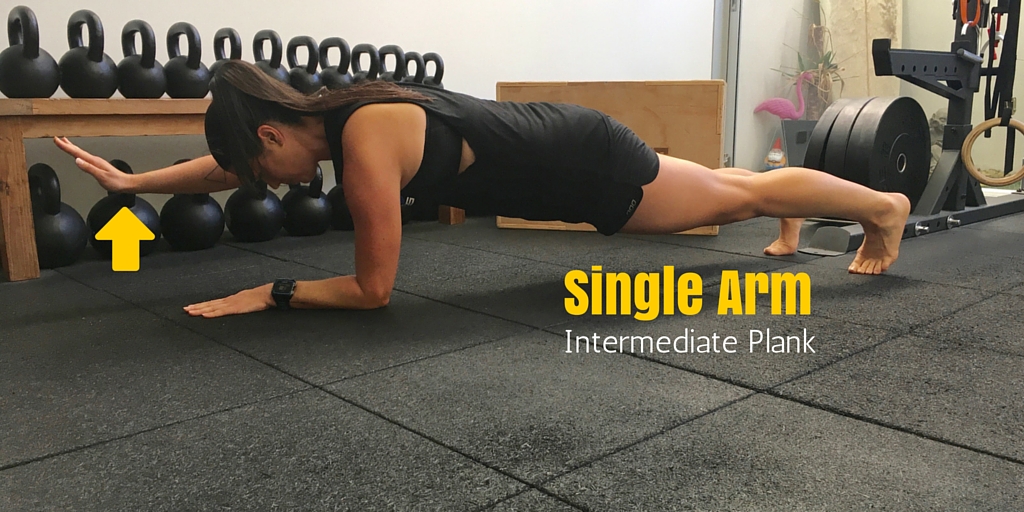
Single Leg Holds
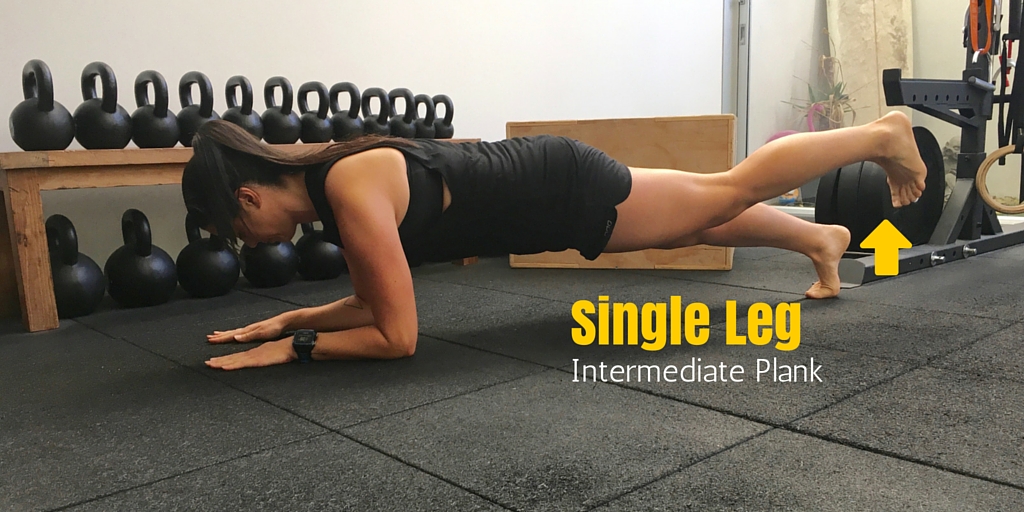
And the real challenge the…
Single Arm and Opposite Leg Hold
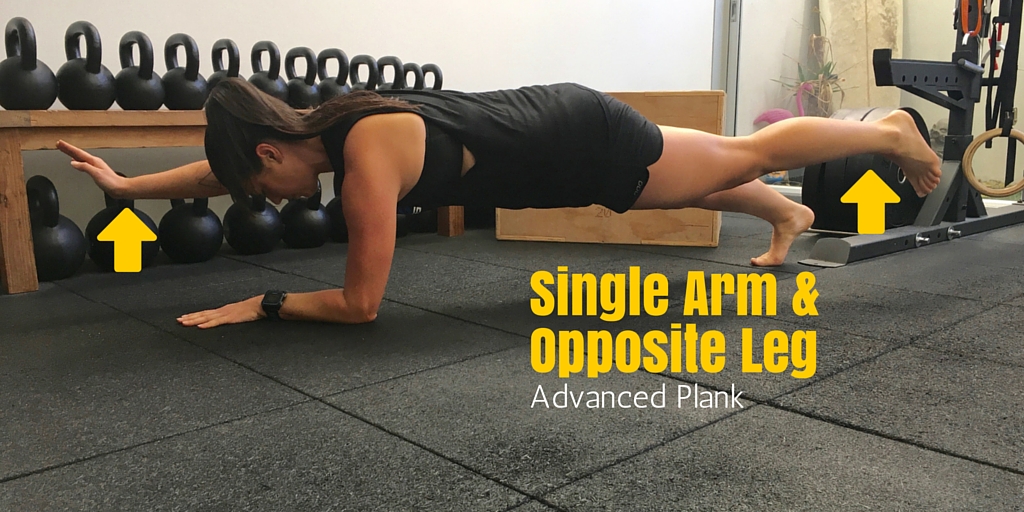
Look to progress these in the same fashion as the plank, small intervals of quality over duration. As you build in strength, build the working intervals into longer holds.
_________________________________
Amber Johnson has been working in the fitness industry now for close to 10 years. Originating from a strength and conditioning background, Amber now regularly trains for and participates in the long course and Ironman triathlon series.
After completing further studies in rehabilitation, functional movement and postural correction, Amber works with a suite of athletes both local and professional, to educate, identify and retrain imbalances in the body’s movement patterns to help them move more efficiently and effectively.
Amber’s training philosophy is about building a solid foundation of strength and stability for her athletes to maintain optimum posture across each discipline allowing the body to perform at its full potential which can be summed up in her favourite quote: “First move well, and then move often” – Gray Cook
Health Benefits Of Planking

People who spend more than 5 hours sitting each day need to do planks. Why?
Because sitting for long hours at a time weaken your core muscles which are crucial for providing support for you back and spinal column.
The weaker your core, the more prone to injuries you will be. And planks are especially helpful in countering the detrimental effects of sitting.
In addition, doing plank exercises every day will also give you other health benefits you may not have thought about:
1. Boost Overall Metabolism
2. Improve Core Performance
3. Decreased Risk of Injury To The Back & Spine
4. More Flexibility
5. Improved Posture
6. Improved Balance
7. Mental Health Benefits
It’s worth reading this article by DailyHealthPost in more detail, especially if you suffer with headaches and migraines… strengthening and stretching are two keys to overcome your pain.
Exercise - Is More Better?
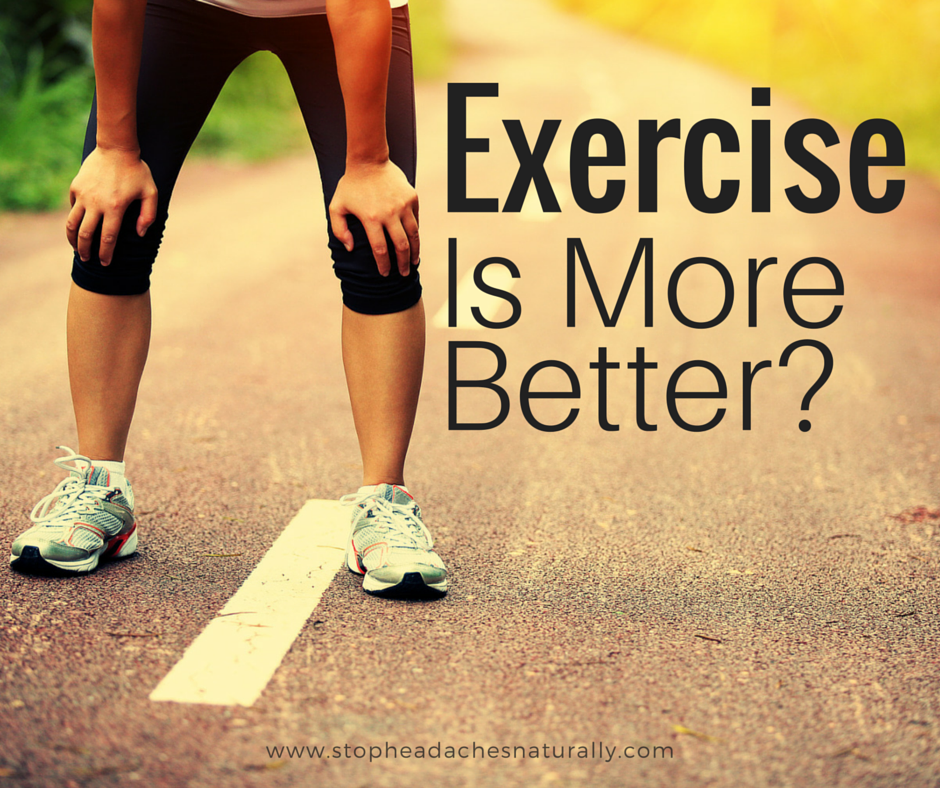
A new study published in Current Biology found that people who exercise a lot don’t burn extra calories for their efforts beyond a certain point.
Now that doesn’t mean you stop exercising but it does shed some light on the misconception that more is better.
Read this interesting WebMD Heath News article and find out:
- What did the study find?
- The role of exercise in weight loss
- Why is it that more exercise is not better?
- Do we hit a kind of plateau?
- How do you find your ’sweet spot’?
- What’s the best take-home advice from this research?
Laughter Better Than Medicine And Affects The Body Like Exercise

After a real belly laugh and wiping the tears from my eyes, there is no doubt to me that my mind and body are better for it... even though my ribs hurt, it's as if a weight has been lifted off my shoulders.
I have always believed that laughter is as good as medicine. So when I came across this article by dailyhealthpost.com regarding 'mirthful laughter' [*] and it's health benefits, I was interested. I trust that you find it as interesting as I did.
[*] Mirthful: full of or showing high-spirited merriment
Enjoy the read...
We are rife with involuntary reactions. We know why we sneeze. We know why we cough. We know why we blink our eyes. But we don't really know why we laugh.
Sense of humour is personal but everyone has one. We weren't built with extraneous physiological processes, everything our bodies do has a purpose. So while we may not know why we laugh, we now know that doing so contributes to physical and emotional health.
In the 1970s, Norman Cousins, editor of the Saturday Review, published his story of laughter as medicine in The New England Journal of Medicine. He subsequently published books on the subject of mind-body healing: Anatomy of an Illness, Head First, and Mind Over Illness. In these, he explores his experience of having been diagnosed with life-threatening heart disease in 1964 for which he had self-treated with massive doses of vitamin C and laughter. [1] (Cousins died in 1990). His story spurred scientific research into the psychology of laughter - gelotology. Many studies have now shown that laughter does, in fact , promote wellness.
The results are complex and fascinating.
Laughter appears to occur more frequently and has a greater physical impact when it occurs in a group setting. laughing alone is good but laughing with others is even better. The physical act of laughing causes the release of endorphins-neurotransmitters that moderate pain and stress with an opiate effect.
In a controlled study, pain threshold was significantly higher after laughter than without. [2] Even anticipation of the prospect of "mirthful laughter" reduces stress hormone levels and increases endorphins and human growth hormone (which contributes to optimizing immunity).
A study of high-risk diabetics found that:
“the addition of an adjunct therapeutic mirthful laughter Rx (a potential modulator of positive mood state) to standard diabetes care may lower stress and inflammatory response and increase 'good' cholesterol levels. The authors conclude that mirthful laughter may thus lower the risk of cardiovascular disease associated with diabetes mellitus and metabolic syndrome.” [3]
The benefits of laughter don't stop there.
The physical act of laughter - not just a chuckle, but real, belly-type laughter - is exercise. If you've ever had one of those episodes (and we certainly hope that you have) in which you laugh so hard that you cry and can't breathe, you know that you could be a little sore afterward. Without thinking, the act of laughing promotes various physical activities:
1. Laughter dilates blood vessels, improving circulation, and exercises abdominal, facial and other muscle groups.
2. The release of growth hormones and dopamine in the brain bring a sense of euphoria and happiness - a high that improves not only mood but supports immune function.
3. With the release of hormones and neurotransmitters during and following a bout of laughter, blood sugar and cholesterol levels are reduced. These effects can last for days, especially if laughter is a regular part of your life.
4. With the highs comes the lows - in a good way: improved blood flow and body nourishment, the reduction of stress and pain, and emotional contentment are followed by greater relaxation and better sleep quality.
Science was loth to investigate the phenomenon of laughter until fairly recently. Unlike other involuntary response, it seemed... click here to read the rest of this article.
Source [1] [2] [3]
Pablo Tymoszuk is a soft tissue therapist specialising in remedial, myofascial and dry needling techniques. He also acts as an ergonomic specialist and wellness consultant which has motivated him to co-author the eBook Stop Headaches Naturally.
Together with Dr Margaret Scarlett they present a range of strategies for stopping headaches and migraines without drugs. All strategies are organized in a systematic manner and backed up by references to the scientific literature.
Can You Exercise For Just 60 Seconds A Week & Transform Your Health?

There are many people who don't exercise because they believe they need to run or cycle hundreds of kilometres, bench press the weight of a car or have a personal trainer that pushes them to new levels to achieve their fitness goals... but that is not true!
Let me make myself clear, I support the personal training industry but not everyone responds to that sort of training.
I have always questioned excessive exercise due to the negative effects it has on the body. Yes, if you want to be on the front cover of Men's Health Magazine with 10% body fat or compete in next years Tour De France, your body will have to undergo serious training to achieve such feats.
On the other hand if your goal is to control your weight, increase your health and decrease the chances of illness or disease, then do you really need to train 4-6 days of week? All you need is a simple fitness program that develops your strength, flexibility and endurance.
High Intensity Training (HIT) has been used for many years. It is a great way to achieve your fitness goals without excessive exercise, reduce the incidence of overuse injuries and allow you to live a balanced life without the stress of meeting unrealistic fitness goals.
Here is an excerpt from Dr. Michael Mosley's (author of 2:5 Diet) Daily Mail article that explains the importance of exercise and the benefits of High Intensity Training...
"Everyone agrees that getting more active will add years to your life (around 2.2 years, to be exact).
But, more importantly, it will significantly reduce your risk of developing a range of chronic diseases, from cancer to heart failure, dementia to diabetes.
Exercise will also help you sleep better, improve your mood and even perk up your sex life, according to the well-regarded Mayo clinic in the U.S. (even help reduce tension headaches).
But how much should you do? In 2008, a committee of U.S. scientists recommended 150 minutes of moderate exercise a week, while cautioning the necessary amounts 'cannot yet be identified with a high degree of precision'. 'In trials, most people say they prefer HIT to conventional exercise, not least because it is over so quickly'
This 150 minutes a week remains the recommended level despite the fact that less than 20 per cent of us do anything like that. The most common excuse is a lack of time. That has certainly been mine - which is why the idea of HIT appeals to me."
Keep reading this interesting article by Dr. Michael Mosley and you will also find out about:
- Roger Bannister Was A 'Fast' Exerciser
- You'll Want To Eat Fewer Calories
- Even Two 20-Seconds Bursts Help
- Your Muscles Will Be More Powerful
- Could It Be Dangerous
Photo: Bahrain Personal Training
Pablo Tymoszuk is a soft tissue therapist specialising in remedial, myofascial and dry needling techniques. He also acts as an ergonomic specialist and wellness consultant which has motivated him to co-author the eBook Stop Headaches Naturally.
Together with Dr Margaret Scarlett they present a range of strategies for stopping headaches and migraines without drugs. All strategies are organized in a syst





